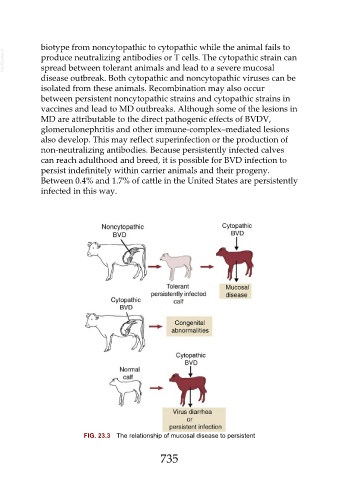Page 735 - Veterinary Immunology, 10th Edition
P. 735
biotype from noncytopathic to cytopathic while the animal fails to
VetBooks.ir produce neutralizing antibodies or T cells. The cytopathic strain can
spread between tolerant animals and lead to a severe mucosal
disease outbreak. Both cytopathic and noncytopathic viruses can be
isolated from these animals. Recombination may also occur
between persistent noncytopathic strains and cytopathic strains in
vaccines and lead to MD outbreaks. Although some of the lesions in
MD are attributable to the direct pathogenic effects of BVDV,
glomerulonephritis and other immune-complex–mediated lesions
also develop. This may reflect superinfection or the production of
non-neutralizing antibodies. Because persistently infected calves
can reach adulthood and breed, it is possible for BVD infection to
persist indefinitely within carrier animals and their progeny.
Between 0.4% and 1.7% of cattle in the United States are persistently
infected in this way.
FIG. 23.3 The relationship of mucosal disease to persistent
735

